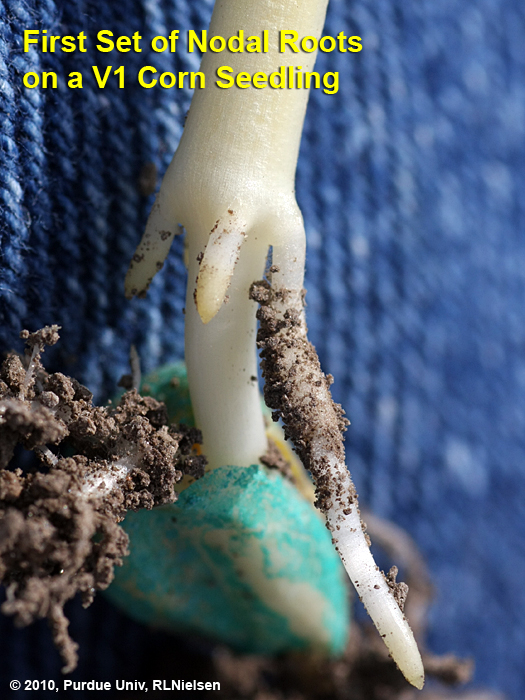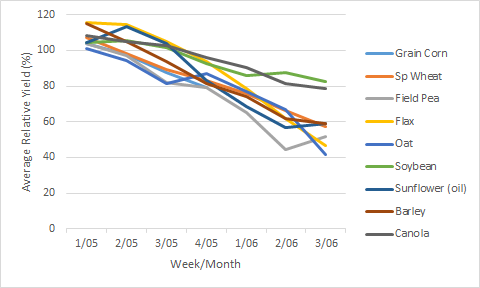Corn Establishment in Dry Soil Conditions

“Corn roots will not grow into dry soils.” – Dr. Joe Lauer, professor of plant and agroecosystems sciences, University of Wisconsin-Madison (retired)
When Manitoba experiences a dry cycle, a major concern is the ability of our crops to endure very dry and crusting soils. Spring drought is particularly concerning for crop germination and emergence. Without moisture, germination simply will not occur. With limited moisture, germination may begin and become halted if/when moisture runs out, resulting in an unproductive seed(ling).
According to Joel Ransom, North Dakota State University small grains & corn extension agronomist, “For most soils, 0.5 inches of rain (sandy soils require slightly less) is needed in order for moisture to move to a two-inch depth (the seed zone) in dry soils. Poor seed-soil contact can restrict the corn seed from extracting enough moisture from the soil to germinate. Crop residues that touch the seed can similarly impede the movement of water to the seed. Occasionally, fertilizers placed with the seed inhibit germination due to their salt effect being more pronounced in dry soils1.”
Of course, soil moisture is not just required for germination. It is required for all vegetative and reproductive growth. Nodal root development is occurring as the growing seedling reaches V1 staging and this requires ample moisture in the top two inches of soil. This new root development will be the primary means by which the plant acquires water and nutrients by the V3 stage1, so successful nodal roots are critical for further development. If soil is to remain dry around the crown (where nodal roots develop, about 0.75 inches below soil surface) for extended periods during early vegetative growth, these nodal roots will not develop. As corn plants grow larger, they become too heavy without the support of this root system and will flop over. This is where the terms floppy or rootless corn syndrome come from and these have frequently been found in areas of higher compaction or shallow seeding in recent years but will be a common symptom of dry growing seasons.
Figure 1: First set of nodal roots developing on a V1 Corn Seedling. Photo: Dr. Bob Neilsen, Purdue University.
Weather conditions in the entire month of May are impossible to predict. It is extremely rare to have so little soil moisture that the crop is unable to germinate or that the crop runs out of moisture during early development. It is rare that this should occur and to the best of our knowledge, it has not happened in Manitoba on a large scale.
Should a crop failure occur in spring due to dry conditions and young seedlings die off via dehydration, a replanting scenario may be considered. Stand reduction does have to be very significant to justify replanting corn simply because of the delayed planting date. Manitoba Agricultural Services Corporation (MASC) historical data shows that there is an estimated yield loss of 5% per week delay in spring planting.
Figure 2: Average relative yield reported to MASC during each sowing week for the selected crops grown in Manitoba for the period of 2010-2019.
Replanting corn is a very expensive decision and most often is not economical unless stand loss is over 16,000 plants per acre. Even in that scenario, the farmer may still be looking at too significant a loss to make it worthwhile. Replanting grain corn should only ever be considered after careful economic analysis of costs against any potential gain2.
For more information on growing corn on the Prairies, see Corn Production Resources on our website.
References
- Ransom, Joel. “Dry Soils and Poor Corn Emergence.” NDSU Crop & Pest Report, NDSU, 1 June 2017, https://www.ndsu.edu/agriculture/ag-hub/ag-topics/crop-production/crop-pest-report.
- Manitoba Agriculture, Corn Seed Bed Preparation. https://www.manitoba.ca/agriculture/crops/crop-management/grain-corn/corn-seed-bed-preparation.html


